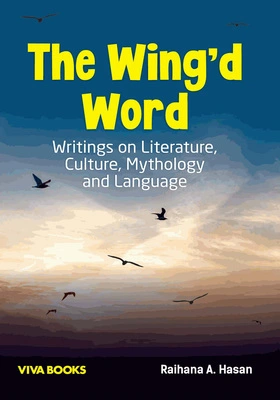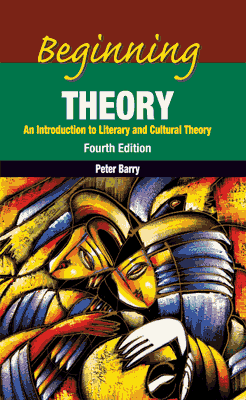The Taming of the Shrew
The Taming of the Shrew
Edited and with an introduction by Harold Bloom
₹535.50 ₹595.00 Save: ₹59.50 (10%)
Go to cartISBN: 9788130933962
Bind: Paperback
Year: 2016
Pages: 290
Size: 152 x 228 mm
Publisher: Facts On File Inc.
Published in India by: Viva Books
Exclusive Distributors: Viva Books
Sales Territory: India, Nepal, Pakistan, Bangladesh, Sri Lanka
Description:
The Taming of the Shrew remains one of Shakespeare's most popular comedies. The loving “battle of the sexes” between its protagonists, Kate and Petruchio, is a theme of nearly universal relevance in Western literature. This invaluable new study guide to one of Shakespeare's greatest plays contains a selection of the finest criticism through the centuries on The Taming of the Shrew, including commentaries by such important critics as Samuel Johnson, George Bernard Shaw, Harold C. Goddard, Alice Meynell and many others. Students will also benefit from the additional features included in this volume, such as an introduction by Harold Bloom, an accessible summary, analysis of key passages, a comprehensive list of characters, a biography of Shakespeare, and more.
Each volume in the Bloom's Shakespeare Through the Ages contains the finest criticism on a particular work from the Bard's oeuvre, selected under the guidance of renowned Shakespearean scholar, Harold Bloom Intended for students just beginning their exploration of Shakespeare, these invaluable study guides present the best of Shakespeare criticism, from the 17th century to today In the process, each volume also charts the flow over time of critical discussion of a particular work.
This essential set is unique not only in the range of commentary it provides on each of Shakespeare's greatest works, but also in its emphasis on the greatest critics in our literary tradition — including such critics as John Dryden in the 17th century, Samuel Johnson in the 18th century, William Hazlitt and Samuel Taylor Coleridge in the 19th century, A.C. Bradley and William Empson in the 20th century, and many more Some of the pieces included are full—length essays; others are excerpts designed to present a key point.
Target Audience:
Students and academics of English literature.
Contents:
Series Introduction • Introduction by Harold Bloom • Biography • of William Shakespeare • Summary of The Taming of the Shrew • Key Passages in The Taming of the Shrew • List of Characters in The Taming of the Shrew
CRITICISM THROUGH THE AGES
The Taming of the Shrew in the Seventeenth and Eighteenth Centuries
1709—Charles Gildon. From “Remarks on the Plays of Shakespear” • 1765—Samuel Johnson. “Notes on The Taming of the Shrew,” from The Plays of William Shakespeare • 1775—Elizabeth Griffith. “The Taming of the Shrew,” from The Morality of Shakespeare's Drama
The Taming of the Shrew in the Nineteenth Century
1817—William Hazlitt. “The Taming of the Shrew, • from Characters of Shakespear's Plays • 1846—August Wilhelm Schlegel. “Criticisms on Shakspeare's Comedies,” from Lectures on Dramatic Art and Literature ”1850—Samuel Hickson. “The Taming of the Shrew,” from Notes and Queries • 1876—Hermann Ulrici. “Taming of the Shrew,” from Shakespeare's Dramatic Art • 1877—Fredrick James Furnviall. “Introduction to the Play,” from The Leopold Shakspere • 1879—Algernon Charles Swinburne. “Second Period: Comic and Historic,” from A Study of Shakespeare • 1883—Edward Dowden. “The Taming of the Shrew,” from Shakspere • 1897—George Bernard Shaw. “Chin, Chon, Chino,” from The Saturday Review
The Taming of the Shrew in the Twentieth Century
1903—Richard G. Moulton. From “Personality and Its Dramatic Expression in Intrigue and Irony,” in The Moral System of Shakespeare • 1904—Charlotte Carmichael Stopes. “The Taming of the Shrew, • from The Atheneum • 1907—Alice Meynell. “Introduction,” from The Complete Works of William Shakespeare • 1915—William Winter. “Characters of Katharine and Petruchio,” from Shakespeare on the Stage • 1926—Edmund K. Chambers. “The Taming of the Shrew,” from Shakespeare: A Survey • 1951—Harold C. Goddard. ”The Taming of the Shrew,” from The Meaning of Shakespeare • 1960—Bertrand Evans. “The Taming of the Shrew,” from Shakespeare's Comedies • 1961—William Empson. “The Strengths of the Shrew,” from the Times Literary Supplement • 1980—Ruth Nevo. “Kate of Kate Hall,” from Comic Transformations in Shakespeare • 1989—Camille Wells Slights. “The Raw and the Cooked in The Taming of the Shrew,” from Journal of English and Germanic Philology
The Taming of the Shrew in the Twenty-first Century
2004—Carolyn E. Brown. “Bianca “and Petruchio: “The Veriest Shrew[s] of All,” from Re-Visions of Shakespeare: Essays in Honor of Robert Ornstein
Bibliography • Acknowledgments • Index
About the Series Editor:
Harold Bloom is Sterling Professor of the Humanities at Yale University and the author of more than 30 books, including Shelley's Mythmaking (1959), Blake's Apocalypse (1963), Yeats (1970), The Anxiety of Influence (1973), A Map of Misreading (1975), Kabbalah and Criticism (1975), Agon: Toward a Theory of Revisionism (1982), The American Religion (1992), The Western Canon (1994), Shakespeare: The Invention of the Human (1998), How to Read and Why (2000), Hamlet: Poem Unlimited (2003), Where Shall Wisdom Be Found” (2004), and Jesus and Yahweh: The Names Divine (2005). In 1999, Professor Bloom received the American Academy of Arts and Letters” Gold Medal for Criticism.







